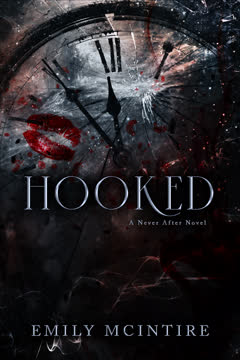Plot Summary
Masks and Mirrors
Blakely Donahue, daughter of a Hollywood mogul, is a social media star whose life is a carefully curated performance. Every meal, every outfit, every smile is calculated for the cameras and her followers. But beneath the flawless exterior, she battles anxiety, obsessive routines, and a gnawing sense of emptiness. Her father's absence and her mother's death haunt her, and she clings to control through rigid eating and exercise. The world sees a glamorous influencer, but Blakely's reality is a lonely struggle to maintain the illusion of perfection, terrified of being exposed as a fraud.
Under the Spotlight's Weight
Blakely's every move is scrutinized by paparazzi and fans, her friendships shallow and transactional. Her best friend Kayla is more interested in proximity to fame than true connection, and her manager Sierra pushes her to ever greater extremes for the sake of the brand. Blakely's father, James, expects excellence but offers little warmth. The relentless demands of her public life leave her exhausted and anxious, her sense of self-worth tied to likes and headlines. She longs for authenticity but fears the vulnerability it requires, hiding her pain behind a practiced smile.
Engines and Expectations
Jackson Rhoades, a talented mechanic with a military family background, moves to California to work for Blakely's father, hoping to fulfill his late dad's dream of seeing their cars in movies. Haunted by unrequited love for his best friend Lee back home, Jackson is used to being second choice. He's drawn to Blakely's rawness but resists her advances, wary of the age gap and her privileged world. Yet, her presence unsettles him, challenging his self-image and stirring desires he tries to suppress. Both are trapped by expectations—hers of fame, his of legacy.
Sparks in the Garage
Forced to work together at Donahue Motors, Blakely and Jackson clash and flirt, their banter masking deeper needs. Blakely is drawn to Jackson's authenticity and the way he refuses to be charmed by her celebrity. Jackson, despite himself, is fascinated by the cracks in her armor and the vulnerability she tries to hide. Their connection grows through shared moments—her attempts to help, his reluctant concern. Each finds in the other a challenge to their self-protective routines, and a dangerous temptation to let someone see beneath the surface.
The Club and the Cage
Blakely's club appearances are a performance, her body a billboard for brands and her image a commodity. Jackson is assigned to "babysit" her, witnessing the predatory attention she endures and the toll it takes. The club's chaos contrasts with their charged, intimate moments—glances, touches, words unsaid. Blakely's need for control collides with her desire for Jackson's approval. The night ends with a tabloid photo that blurs the line between real and fake, thrusting their private tension into the public eye and setting off a chain of consequences.
Panic Behind Perfection
The pressure of public scrutiny and personal failure triggers a panic attack for Blakely, witnessed by Jackson. For the first time, someone sees her unravel, and instead of recoiling, Jackson anchors her through the storm. He recognizes the signs from his father's PTSD and offers steady presence, not judgment. This moment of raw vulnerability forges a deeper bond between them, exposing the cost of Blakely's relentless pursuit of perfection and the loneliness at its core. Jackson's empathy becomes a lifeline, and Blakely glimpses the possibility of being loved as she is.
Headlines and Heartbreak
The tabloids seize on the photo of Blakely and Jackson, spinning stories that threaten both their reputations. Blakely's manager urges her to exploit the attention, while Jackson fears being used as a prop. Their growing intimacy is tested by public speculation and private insecurities. Blakely's self-doubt intensifies, fueled by online comments and the ever-present threat of scandal. Jackson, torn between ambition and loyalty, struggles to protect her without losing himself. The world's gaze becomes a wedge, forcing them to confront what they mean to each other and what they're willing to risk.
Unraveling at the Seams
Blakely's carefully managed routines collapse under the weight of stress, leading to a binge and purge episode that leaves her shaken and ashamed. Jackson witnesses her pain and refuses to look away, offering comfort without judgment. Their relationship deepens as they share their traumas—her mother's death, his father's illness, their mutual sense of not being enough. Yet, the demands of fame, family, and self-doubt threaten to pull them apart. Blakely's fear of imperfection and Jackson's fear of being second choice collide, testing the limits of their connection.
Anchors in the Storm
In the aftermath of crisis, Blakely and Jackson find solace in each other's arms, their physical intimacy a balm for emotional wounds. For the first time, Blakely feels seen and desired beyond her image, and Jackson experiences love that is both passionate and healing. Yet, their happiness is fragile, shadowed by secrets, external pressures, and the knowledge that their worlds may not be compatible. The threat of exposure, the disapproval of Blakely's father, and the manipulations of those around them loom, forcing them to choose between safety and authenticity.
The Taste of Realness
As their relationship intensifies, Blakely and Jackson struggle to reconcile their private truth with public expectations. Blakely's routines and anxieties resurface, challenged by Jackson's insistence on realness and his refusal to enable her self-destructive habits. Their love becomes a crucible, burning away illusions and demanding honesty. Blakely begins to question the value of her curated life, while Jackson confronts his own patterns of self-sacrifice and avoidance. Together, they glimpse a different way of being—one rooted in acceptance, vulnerability, and mutual care.
Lines Crossed, Lines Drawn
The revelation of their relationship sparks conflict with Blakely's father, who sees Jackson as a threat and an interloper. Ultimatums are issued, secrets exposed, and alliances shift. Blakely is forced to choose between her father's approval and her own happiness, while Jackson must decide whether to fight for love or protect his dreams. Friends and confidantes reveal their true colors, and betrayals cut deep. The cost of crossing lines—between employer and employee, parent and child, public and private—becomes painfully clear, and both must reckon with the consequences.
The Cost of Control
In a desperate bid to protect Jackson's future, Blakely agrees to end their relationship, staging a public breakup and retreating into old patterns of control. The pain of loss drives her to the brink, her eating disorder and anxiety spiraling out of control. Jackson, devastated and blindsided, returns home, believing he was never truly chosen. Both are left to confront the wreckage of their choices, the limits of self-sacrifice, and the reality that love cannot thrive in secrecy and shame. Healing seems impossible, and hope a distant memory.
Secrets and Sacrifices
As Blakely's world unravels, betrayals by friends and managers come to light, forcing her to reevaluate who she can trust. Her father's belated attempts at connection open old wounds but also offer a chance for reconciliation. Jackson, back in his hometown, faces his own ghosts and the friendships he left behind. Both must confront the secrets they've kept—from each other and themselves—and the ways they've sacrificed their own well-being for the sake of others. The path to healing demands honesty, forgiveness, and the courage to start anew.
Breaking the Cycle
Blakely enters treatment, confronting her eating disorder, OCD, and the roots of her anxiety. Therapy and Exposure is grueling but transformative, teaching her new ways to cope and challenging her to accept imperfection. She fires her toxic manager, reconciles with her father, and begins to rebuild her life on her own terms. Jackson, meanwhile, reconnects with his family and friends, realizing that his worth is not defined by being needed or chosen. Both learn that healing is a process, not a destination, and that self-love is the foundation for any other love.
The Fallout of Fame
Emerging from treatment, Blakely chooses authenticity over image, sharing her struggles publicly and rejecting the pressures of perfection. She reclaims her narrative, using her platform to advocate for mental health and realness. Jackson, having walked away from his Hollywood dreams, discovers that fulfillment comes from within, not from external validation. Their journeys intersect once more, each changed by pain and growth. The fallout of fame is not just scandal and loss, but the opportunity to redefine what matters and who they want to be.
Healing in the Shadows
Blakely travels to Jackson's hometown, determined to make amends and fight for their love. Their reunion is fraught with pain and uncertainty, but also honesty and hope. They confront the wounds they inflicted on each other, the patterns that held them back, and the possibility of a future built on mutual respect and support. Forgiveness is hard-won, and trust must be rebuilt, but both are willing to do the work. Together, they choose to step out of the shadows and into the light, embracing the messiness of real love.
Choosing Each Other
Blakely and Jackson commit to each other, not as saviors or projects, but as partners in healing and growth. They learn to communicate, to set boundaries, and to support each other without losing themselves. Their relationship is no longer a secret or a performance, but a source of strength and joy. They build a life together rooted in honesty, vulnerability, and acceptance, knowing that love is not a cure but a companion on the journey. The past cannot be erased, but the future is theirs to shape.
Beneath the Hood
In the end, Blakely and Jackson discover that true beauty lies not in flawless appearances, but in the courage to be seen as they are. Their love is forged in struggle and sustained by choice, a testament to the power of authenticity and the possibility of redemption. They find home in each other, not as an escape from pain, but as a place to belong. Beneath the hood of their carefully constructed lives, they uncover the messy, beautiful truth of being human—and choose, every day, to live it together.
Characters
Blakely Donahue
Blakely is a social media influencer and the daughter of a powerful Hollywood producer. Outwardly, she embodies beauty, discipline, and success, but internally she is plagued by anxiety, obsessive routines, and a desperate need for control. Her mother's death and her father's emotional distance have left her feeling unworthy and alone. Blakely's relationships are transactional, and she struggles to trust or be vulnerable. Her eating disorder and panic attacks are both a cry for help and a shield against chaos. Over the course of the story, she learns to confront her demons, seek help, and embrace imperfection, finding strength in authenticity and love.
Jackson Rhoades
Jackson is a gifted mechanic with a legacy to fulfill—his late father's dream of seeing their cars in movies. Haunted by unrequited love and a pattern of being second choice, Jackson is charming but guarded, using humor and detachment to protect himself. His attraction to Blakely challenges his self-image and forces him to confront his own wounds. Jackson is empathetic, especially to pain he recognizes from his father's PTSD, but he struggles with boundaries and self-worth. His journey is one of learning to choose himself, to love without losing his identity, and to find home not in achievement, but in connection.
James Donahue
Blakely's father is a powerful Hollywood producer, defined by ambition and haunted by the death of his wife. He loves his daughter but expresses it through control and high expectations, often failing to see her true struggles. His workaholism is both a shield against grief and a barrier to intimacy. James's journey is one of reckoning with his failures as a parent, learning to listen, and ultimately supporting Blakely's healing—even at the cost of his own pride.
Sierra
Sierra is Blakely's manager, embodying the ruthless logic of the entertainment industry. She pushes Blakely to extremes for the sake of the brand, prioritizing image over well-being. Sierra's relationship with Blakely is transactional, offering structure but also reinforcing toxic patterns. She represents the external pressures that shape Blakely's self-image, and her eventual firing marks a turning point in Blakely's journey toward autonomy and authenticity.
Kayla
Kayla is Blakely's best friend, drawn to the perks of fame but resentful of always being in Blakely's shadow. Their relationship is marked by codependency, competition, and betrayal. Kayla's actions—leaking secrets, pursuing Blakely's bodyguard—reflect her own insecurities and the corrosive effects of living in proximity to celebrity. Her arc highlights the difficulty of maintaining genuine connection in a world obsessed with status.
Lennox
Lennox is Blakely's long-time bodyguard, a figure of quiet strength and loyalty. He is both protector and observer, witnessing Blakely's struggles without judgment. His own emotional reserve masks a deep care, and his relationship with Kayla complicates his role. Lennox represents the possibility of steadfast support, even when boundaries are blurred.
Lee (Alina)
Lee is Jackson's childhood friend and former unrequited love. Her presence in the story forces Jackson to confront old wounds and patterns of self-sacrifice. Lee is warm, genuine, and forgiving, embodying the kind of friendship that endures through pain. Her arc is one of healing, reconciliation, and letting go, allowing Jackson to move forward.
Chase
Chase is Jackson's former best friend, whose betrayal and absence shaped much of Jackson's self-image. Their eventual reconciliation is a mirror for Jackson's own journey—learning to forgive, to accept imperfection, and to value connection over pride. Chase's story is one of redemption and the enduring power of friendship.
Becca
Becca is a friend to both Jackson and Lee, known for her candor and loyalty. She serves as a catalyst for difficult conversations and a source of comic relief. Becca's presence grounds the story in community, reminding the protagonists that healing is not a solitary endeavor.
Dr. Janice Dean
Dr. Dean is Blakely's therapist at Turning Pointe, leading her through the grueling process of cognitive-behavioral therapy and exposure. She is compassionate but firm, challenging Blakely to confront her patterns and build new coping mechanisms. Dr. Dean represents the possibility of professional help and the importance of seeking support beyond one's immediate circle.
Plot Devices
Dual Narration and Shifting Perspectives
The novel employs a dual narrative structure, alternating between Blakely and Jackson's points of view. This device allows readers to experience the same events through different emotional lenses, highlighting misunderstandings, internal conflicts, and the gap between appearance and reality. The shifting perspectives deepen empathy and suspense, as each character's secrets and motivations are gradually revealed.
Public Versus Private Selves
The tension between public image and private reality is a central device, embodied in Blakely's influencer persona and Jackson's role as both employee and lover. The story uses settings (clubs, garages, social media) and plot events (tabloid scandals, staged breakups) to explore the costs of living for others' approval. The contrast between onstage and offstage moments foreshadows the eventual collapse of the façade and the necessity of realness for healing.
Foreshadowing and Symbolism
The motif of cars—restoration, engines, and "beneath the hood"—serves as a metaphor for the characters' inner lives. Just as Jackson brings beauty out of broken machines, both protagonists must confront and repair their own damage. Blakely's obsessive routines and panic attacks foreshadow her eventual breakdown and need for help. The recurring use of numbers (calorie counts, countdowns) symbolizes her struggle for control and the slow process of recovery.
The "Deal with the Devil" and Sacrifice
A pivotal plot device is the ultimatum issued by Blakely's father—forcing her to choose between love and legacy. Blakely's decision to sacrifice her happiness for Jackson's career echoes the broader theme of self-betrayal for the sake of others' approval. This device drives the darkest part of the narrative, setting up the need for both characters to reclaim agency and redefine what they are willing to lose or fight for.
Therapy and Exposure
The use of therapy—both individual and group—as a plot device marks the story's turn toward healing. The exposure exercises, confessions, and public sharing of struggles serve as both literal and symbolic acts of vulnerability. The process of seeking help, confronting triggers, and rebuilding routines is depicted as messy, nonlinear, and essential for growth.
Reunion and Reconciliation
The final act employs the classic device of the journey and return—Blakely traveling to Jackson's hometown to make amends. Their reunion is not a simple restoration, but a negotiation of boundaries, trust, and mutual commitment. The story uses this device to underscore the message that love is a choice, not a cure, and that true connection requires ongoing work.
Analysis
Beneath the Hood is a raw, unflinching exploration of the costs of perfectionism, the corrosive effects of fame, and the redemptive power of authenticity. Emily McIntire's novel strips away the glittering veneer of celebrity to reveal the pain, anxiety, and loneliness that often lie beneath. Through the intertwined journeys of Blakely and Jackson, the story interrogates the ways we perform for others—on social media, in relationships, and even for ourselves—and the damage wrought by living for external validation. The narrative refuses easy answers, depicting healing as a messy, nonlinear process that demands vulnerability, self-reflection, and the courage to seek help. The love story at its heart is not a fairy tale, but a testament to the daily work of choosing each other, setting boundaries, and embracing imperfection. The novel's ultimate lesson is that beauty and worth are found not in flawless appearances, but in the willingness to be seen, to be real, and to love—both oneself and others—beneath the hood.
Last updated:
Review Summary
Beneath the Hood received mixed reviews, with an average rating of 3.97 out of 5. Readers praised the emotional depth, character development, and handling of mental health issues. Many appreciated the age-gap romance and Jackson's character. However, some found Blakely's character frustrating and the pacing inconsistent. The book tackles themes of anxiety, eating disorders, and social media influence. While some readers felt deeply connected to the story, others struggled with the age difference and influencer lifestyle portrayed. The epilogue generated excitement for the next book in the series.
Sugarlake Series
Similar Books
Download PDF
Download EPUB
.epub digital book format is ideal for reading ebooks on phones, tablets, and e-readers.
























